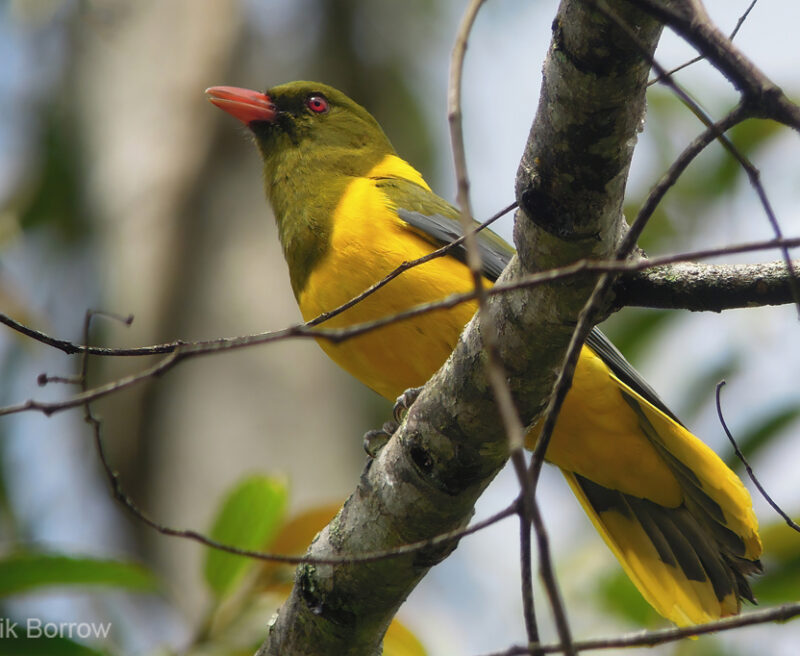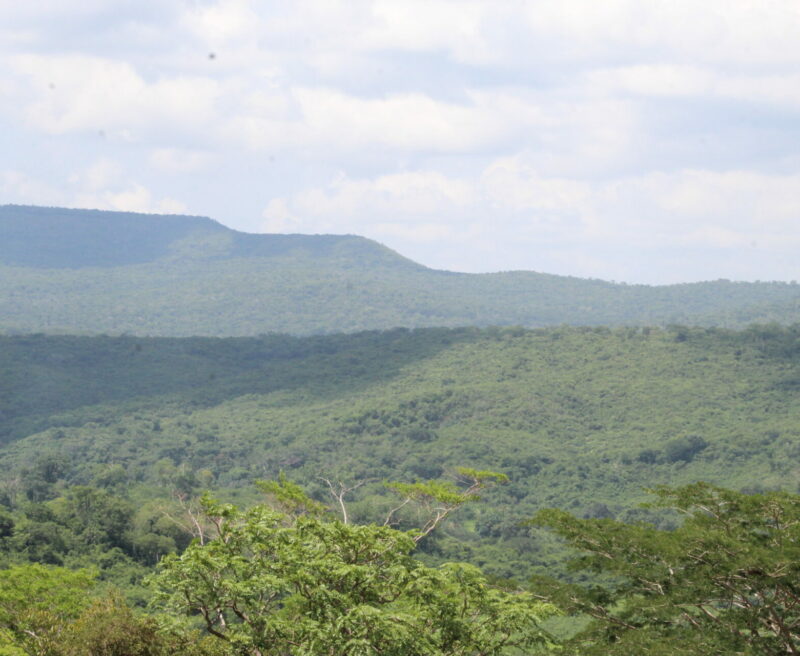Green-headed Oriole
Species Data
Class: Aves
Order: Passeriformes
Family: Oriolidae
Scientific Name: Oriolus chlorocephalus
IUCN Red List status: Least Concern
Description
The Green-headed Oriole is a beautiful multicoloured bird, with a very restricted patchy range in south-eastern Africa.
They are 21.5-24 cm in length, and have an olive-green upper breast, neck, and head, with a contrasting red iris. The underparts are bright yellow and the legs bluish-grey. Above they are olive-green with a bright yellow hind neck and dark grey primaries and secondaries, the latter with light grey outer webs and whitish edges that form a pale panel on the closed wing. The tail is yellow below and olive-green above, becoming yellow towards the outer feathers. Both sexes look alike but can be told apart by the bill colour, the male having a deep red bill and the female a browner bill.
Younger birds are similar to the adults, but they have a blackish bill, a narrow ring of yellow feathers surrounding the eye, a dull yellow upper breast with olive mottling, olive streaks on the upper belly, a yellow-olive chin, throat, and mantle, and white tips and edges to the secondaries along with broad white tips to the primary coverts.
Behaviour
The diet of the Green-headed Oriole includes fruits, seeds, nectar, as well as invertebrates. They usually forage alone or in pairs from mid storey to the canopy, sometimes joining mixed-species flocks. They will also come together in small groups to fruiting or flowering trees, often with Eastern Black-headed Oriole (Oriolus larvatus).
They begin to form pairs in June, and start calling in August, a liquid “ku-wee-oo”, that is accompanied by spreading the tail. Nesting occurs from August – November, with a single clutch of two eggs laid in a deep cup nest constructed from Usnea or beard lichen, that is situated on a horizontal forked branch in the canopy.


Habitat
The Green-headed Oriole lives in fragmented populations in south-eastern Kenya, southern Malawi, Mozambique, and eastern Tanzania.
This species is found in coastal forest, primary lowland forest, woodlands, secondary forest, riparian forest, and montane forest up to 1,450 m.
Threats and Conservation
The global population size of the Green-headed Oriole has not been determined but appears to be declining due to habitat loss. However, the rate of decline is slow, and they are considered to be locally common to uncommon in parts of their range. This species also occurs in several protected areas. Therefore, they are listed as Least Concern on the IUCN Red List.
To prevent further declines their remaining forest habitat must be preserved. In Tanzania and starting in 2021, WLT is supporting a project by partner TFCG, to save coastal forests that are a confirmed home for the Green-headed Oriole.
